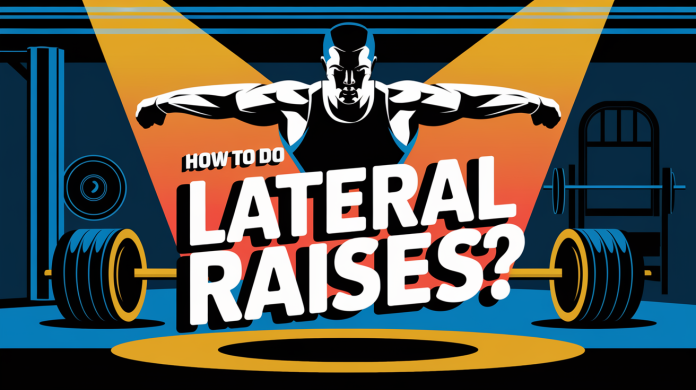Lateral raises are one of the best exercises for building broader shoulders and improving the overall aesthetics of your upper body. This simple move specifically targets the deltoids, primarily focusing on the middle (lateral) part of the shoulder, giving your physique that coveted V-shape. Let’s dive into how to do lateral raises, along with their benefits, common mistakes to avoid, and variations to try.
How to Do Lateral Raises?
Performing lateral raises correctly ensures that you are targeting the right muscles. Here’s a step-by-step guide to mastering the form:
- Start Position: Stand tall with a dumbbell in each hand. Your feet should be hip-width apart, and your knees slightly bent for stability. Let your arms hang by your sides with palms facing your body.
- Engage Your Core: Pull your shoulder blades back and down, engage your core, and ensure your posture is upright.
- Raise the Dumbbells: Keeping your elbows slightly bent, lift the dumbbells out to your sides, leading with your elbows. Raise them until they reach shoulder height, forming a “T” shape. Do not raise them higher to avoid excess strain on your shoulder joints.
- Controlled Descent: Slowly lower the dumbbells back down to the starting position. Aim for a slow, controlled motion—take about twice as long to lower the weights as you did to raise them.
- Repetition: Perform 2-3 sets of 8-12 reps, depending on your fitness goals. Always focus on proper form and avoid using momentum.
What are the Benefits?
Lateral raises are an excellent isolation exercise for strengthening and defining the shoulders. By targeting the deltoid muscles, they help enhance shoulder mobility, stability, and range of motion. This, in turn, improves performance in sports and other upper-body exercises. Additionally, lateral raises help reduce the risk of shoulder injuries by strengthening the stabilizing muscles around the shoulder joint.
What are the Risks?
While lateral raises are generally safe, improper form or using weights that are too heavy can lead to shoulder strain or injury. Common mistakes, such as using momentum or lifting your arms too high, can place unnecessary stress on the shoulder joints and surrounding muscles. Always focus on controlled movements and ensure you are lifting an appropriate weight.

Who Should Do Lateral Raises?
Lateral raises are suitable for most people, from beginners to advanced exercisers, as long as the form is maintained. If you’re looking to improve the appearance and strength of your shoulders, this exercise is essential. It’s especially beneficial for bodybuilders and individuals focusing on shoulder hypertrophy.
Who Should Not Do Lateral Raises?
If you have a history of shoulder injuries or experience pain while performing lateral raises, it’s best to consult with a physical therapist before continuing. Modifying the exercise or using lighter weights may be necessary.
Tips for Lateral Raises
- Focus on Form: Keep your core engaged, back straight, and avoid swinging the dumbbells.
- Go Slow: Control both the lifting and lowering phases of the movement.
- Start Light: Begin with lighter weights to perfect your form, and gradually increase the weight as you gain strength.
Variations of Lateral Raises
- Alternating Lateral Raise: Perform the movement one arm at a time, focusing on form for each side.
- Seated Lateral Raise: Sit on a bench to eliminate momentum and target the deltoids more effectively.
- Thumbs-Up Grip: A variation that targets different muscles by changing the hand position.
References
- How to Do Lateral Raises – Men’s Health
- How to Do Lateral Raises: Techniques & Variations – Verywell Fit
- How To Master Lateral Raises: Form, Technique, & Benefits – Peloton
- Dumbbell Lateral Raise: Video Exercise Guide & Tips – Muscle and Strength
Discover a wealth of information on our blog, where we delve into the world of sports life, provide comprehensive guides on exercises, share delicious and nutritious fit recipes, and explore the intricacies of muscle anatomy. Whether you’re a fitness enthusiast or just starting your journey, our blog offers valuable insights and tips to help you achieve your health and fitness goals.
Thanks for reading. Stay healthy and stay fit!



